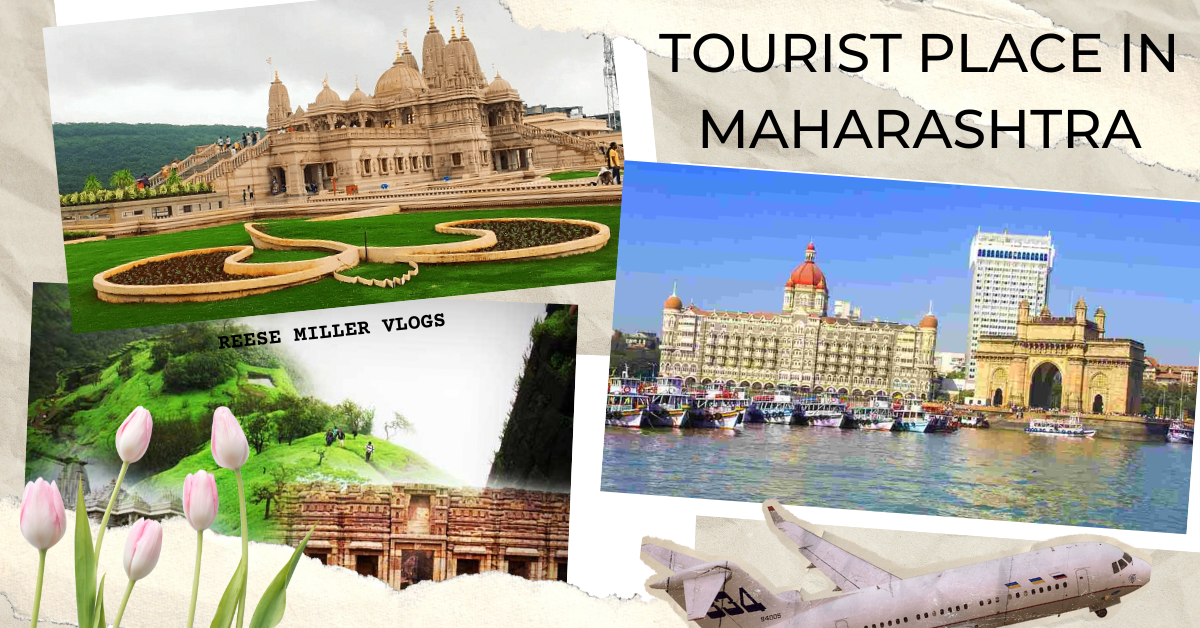Relevance and Cultural Significance:
- Gateway of India, Mumbai: The Gateway of India, standing tall on the Mumbai waterfront, is more than a monument; it’s an icon of Maharashtra’s cosmopolitan spirit. Built to commemorate the visit of King George V and Queen Mary, the Gateway has evolved into a symbol of India’s independence and a gathering point for locals and tourists alike.
- Ajanta and Ellora Caves: The Ajanta and Ellora Caves, UNESCO World Heritage Sites, are marvels of ancient Indian art and architecture. Carved out of rock, these caves narrate stories of Buddhism, Hinduism, and Jainism, showcasing Maharashtra’s cultural diversity and historical significance.
- Shaniwar Wada, Pune: Shaniwar Wada, the historic fortification in Pune, is a testament to the Maratha Empire’s glory. Once the seat of the Peshwas, the fort represents Maharashtra’s martial traditions and the historical legacy of the Maratha rulers.
Evolution of Tourist Places:
- Elephanta Caves, Mumbai: The Elephanta Caves, situated on Elephanta Island, have evolved into a prominent cultural and heritage site. The caves, with their rock-cut sculptures and intricate carvings, attract not only history enthusiasts but also those seeking spiritual and artistic inspiration.
- Lonavala and Khandala: Lonavala and Khandala, nestled in the Western Ghats, have evolved from serene hill stations to bustling tourist hubs. The picturesque landscapes, coupled with adventure activities, have turned these destinations into popular getaways for city dwellers, contributing to the evolution of Maharashtra’s tourism sector.
- Chhatrapati Shivaji Maharaj Terminus (CSMT), Mumbai: Formerly known as Victoria Terminus, CSMT is a blend of Victorian Gothic and Indian architectural styles. The terminus, a UNESCO World Heritage Site, has evolved into a bustling transportation hub and an architectural jewel, embodying Mumbai’s dynamism and historical continuity.
Impact on Society:
- Cultural Integration: Maharashtra’s tourist places serve as catalysts for cultural integration. The diverse influences seen in art, architecture, and traditions create a cultural tapestry that fosters unity and harmony among the state’s residents. The Gateway of India, for instance, is a testimony to Mumbai’s cultural diversity and cosmopolitan ethos.
- Economic Empowerment: The tourism industry in Maharashtra is a key driver of economic empowerment. The influx of visitors supports a range of businesses, including hospitality, transportation, and local crafts, creating employment opportunities and contributing significantly to the state’s economy.
- Educational and Inspirational Hubs: Maharashtra’s tourist places often double as educational and inspirational hubs. The Ajanta and Ellora Caves, for example, serve as repositories of ancient wisdom, attracting scholars, artists, and history enthusiasts. These sites inspire a sense of awe and curiosity, fostering intellectual growth within the society.
Potential Future Developments:
- Sustainable Tourism Practices: Future developments should prioritize sustainable tourism practices. Responsible management of historical sites, conservation efforts, and the promotion of eco-friendly initiatives can ensure the long-term preservation of Maharashtra’s cultural and natural landmarks.
- Digital Integration for Enhanced Experiences: Leveraging technology for tourism can enhance visitor experiences. Digital platforms, virtual reality tours, and interactive exhibits can provide a more immersive understanding of Maharashtra’s history, culture, and natural beauty, making these experiences accessible to a wider audience.
- Community Engagement and Skill Development: In the future, increased emphasis on community engagement through tourism can ensure that the benefits are shared equitably. Involving local communities in the management and promotion of tourist places can foster a sense of ownership and pride. Skill development programs can equip locals with the necessary tools to actively participate in the tourism industry.
Conclusion:
Maharashtra’s best and famous tourist places are not just physical destinations; they are vibrant chapters in the state’s history, cultural amalgamation, and natural allure. As we explore the Gateway of India, marvel at the Ajanta and Ellora Caves, or soak in the beauty of Lonavala, it becomes evident that these landmarks are integral to Maharashtra’s societal fabric. Looking ahead, sustainable practices, technological integration, and community engagement can further elevate Maharashtra as a cultural and historical treasure trove, where tradition and modernity coalesce seamlessly. Let us celebrate the diversity, embrace the narratives, and contribute to a legacy that continues to unfold in the dynamic landscapes of Maharashtra.


